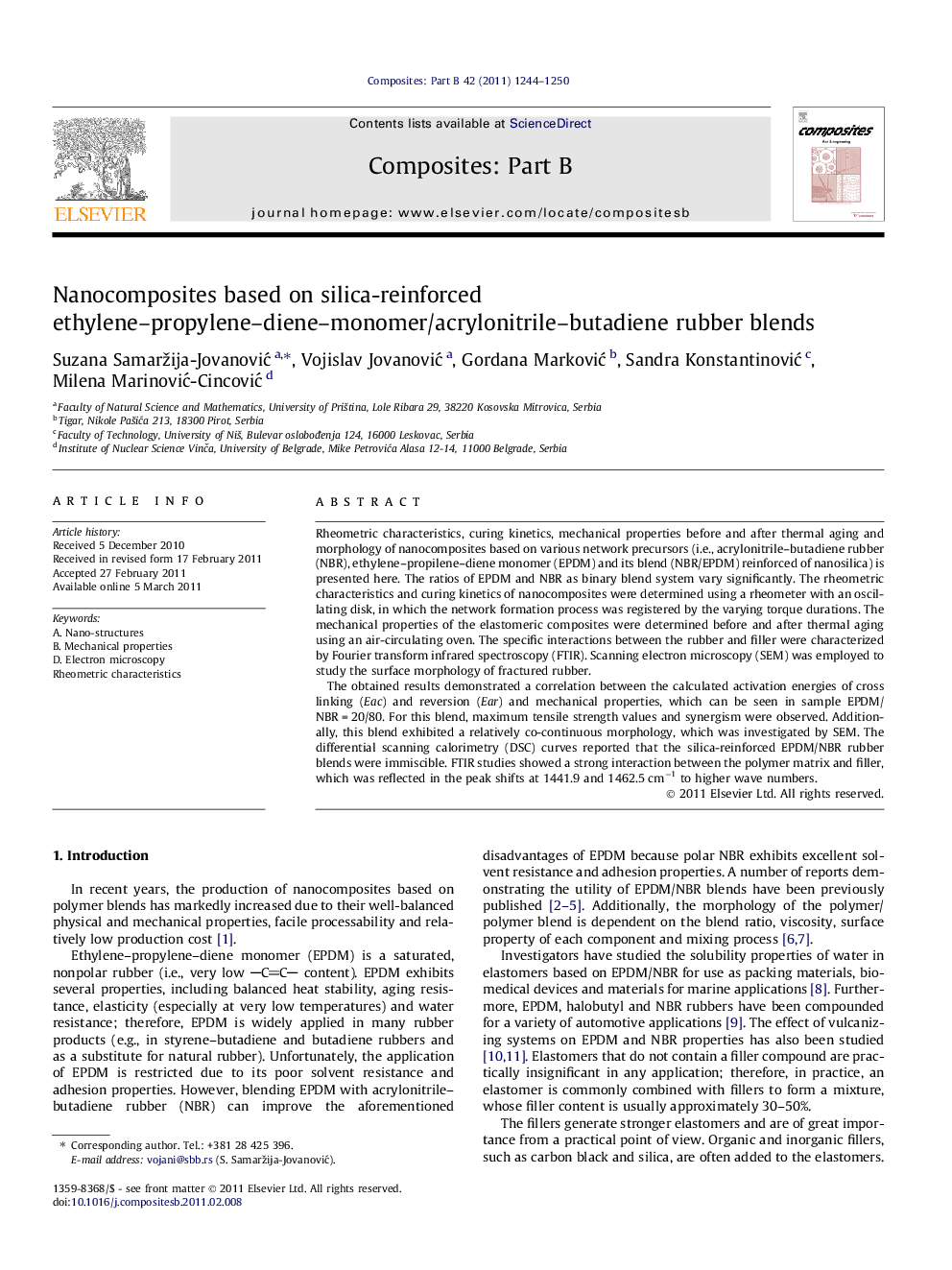| کد مقاله | کد نشریه | سال انتشار | مقاله انگلیسی | نسخه تمام متن |
|---|---|---|---|---|
| 818994 | 906539 | 2011 | 7 صفحه PDF | دانلود رایگان |

Rheometric characteristics, curing kinetics, mechanical properties before and after thermal aging and morphology of nanocomposites based on various network precursors (i.e., acrylonitrile–butadiene rubber (NBR), ethylene–propilene–diene monomer (EPDM) and its blend (NBR/EPDM) reinforced of nanosilica) is presented here. The ratios of EPDM and NBR as binary blend system vary significantly. The rheometric characteristics and curing kinetics of nanocomposites were determined using a rheometer with an oscillating disk, in which the network formation process was registered by the varying torque durations. The mechanical properties of the elastomeric composites were determined before and after thermal aging using an air-circulating oven. The specific interactions between the rubber and filler were characterized by Fourier transform infrared spectroscopy (FTIR). Scanning electron microscopy (SEM) was employed to study the surface morphology of fractured rubber.The obtained results demonstrated a correlation between the calculated activation energies of cross linking (Eac) and reversion (Ear) and mechanical properties, which can be seen in sample EPDM/NBR = 20/80. For this blend, maximum tensile strength values and synergism were observed. Additionally, this blend exhibited a relatively co-continuous morphology, which was investigated by SEM. The differential scanning calorimetry (DSC) curves reported that the silica-reinforced EPDM/NBR rubber blends were immiscible. FTIR studies showed a strong interaction between the polymer matrix and filler, which was reflected in the peak shifts at 1441.9 and 1462.5 cm−1 to higher wave numbers.
Journal: Composites Part B: Engineering - Volume 42, Issue 5, July 2011, Pages 1244–1250